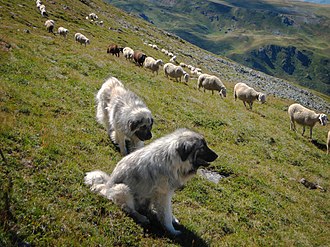
Back Mak maak Afrikaans Domestizierung ALS Domesticación AN استئناس Arabic ঘৰুৱাকৰণ Assamese Adoma AST Əhliləşdirmə Azerbaijani اهلیلشدیرمک AZB Йортлаштырыу Bashkir Адамашненне Byelorussian


Domestication is a multi-generational mutualistic relationship in which an animal species, such as humans or leafcutter ants, takes over control and care of another species, such as sheep or fungi, to obtain from them a steady supply of resources, such as meat, milk, or labor. The process is gradual and geographically diffuse, based on trial and error. Domestication affected genes for behavior in animals, making them less aggressive. In plants, domestication affected genes for morphology, such as increasing seed size and stopping the shattering of cereal seedheads. Such changes both make domesticated organisms easier to handle and reduce their ability to survive in the wild.
The first animal to be domesticated by humans was the dog, as a commensal, at least 15,000 years ago. Other animals, including goats, sheep, and cows, were domesticated around 11,000 years ago. Among birds, the chicken was first domesticated in East Asia, seemingly for cockfighting, some 7,000 years ago. The horse came under domestication around 5,500 years ago in central Asia as a working animal. Among invertebrates, the silkworm and the western honey bee were domesticated over 5,000 years ago for silk and honey, respectively.
The domestication of plants began around 13,000–11,000 years ago with cereals such as wheat and barley in the Middle East, alongside crops such as lentil, pea, chickpea, and flax. Beginning around 10,000 years ago, Indigenous peoples in the Americas began to cultivate peanuts, squash, maize, potatoes, cotton, and cassava. Rice was first domesticated in China some 9,000 years ago. In Africa, crops such as sorghum were domesticated. Agriculture developed in some 13 centres around the world, domesticating different crops and animals.
Three groups of insects, namely ambrosia beetles, leafcutter ants, and fungus-growing termites have independently domesticated species of fungi, on which they feed. In the case of the termites, the relationship is a fully obligate symbiosis on both sides.